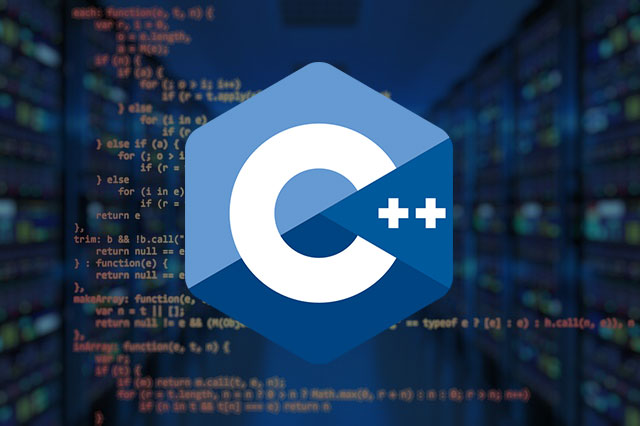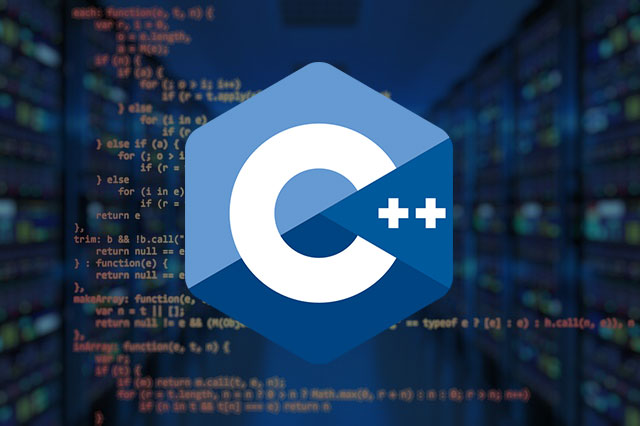The Interesting, New Timeless Scope of C++ course Details, Duration and Syllabus – 2022
Without a delay, let’s start discussing The Scope of C++ Course Details with the C++ course Duration. Course Structure and C++ Programming Course Syllabus.
This article has an overview of the C++ programming language and the Scope of the C++ Course details.
Read this article and understand, the fundamental features in great details. The scope types of C++, practical applications of C++, and the course structure to pursue the Certified C++ Course.
Henry Harvin Educational Academy is offering a meticulously designed C++ Course for aspirants who aim to build a developer career.

C++ Programming Language
The C++ programming language is an extension of the C programming language or C with Classes. Computer scientist Bjarne Stroutrup – the founder, develops C++ a general-purpose language in 1998.
C++ language is a compilation language. The giants and free software foundations namely: LLVM, Intel, Microsoft, IBM, Oracle and other vendors provide C++ compilers. C++ is available on various platforms.
Bjarne wanted the C++ language to be as efficient and flexible as the C language.
C++ is the best fit for intermediate-level programmers and interested candidates can learn the programming concepts of the language swiftly with ease which will set them as a developer in high demand.
The Career Scope of C++ Course Details
Most internet giants use C++ to develop GUI-based application software. C++ is the fastest programming language available. Perhaps, operating systems, web browsers, developing games, and even the entertainment industry use C++.
Adobe products Illustrator, Photoshop, etc., Web browsers Chrome, Firefox, Netscape Navigator, Opera, Safari and Internet Explorer; unreal engines use C++ language for their construction.
Performance-pressing areas prefer the C++ language, to its high-speed features. The latest C++22 standards make C++ the fastest-growing programming language in the developers’ communities.
Most critical software practically uses C++ for its development.
A list of applications that are developed using C++ and their scope type in C++ language:
- Personal Computer Operating Systems
- Games Development
- Graphical User Interface (GUI) based Applications
- Database Management System (DBMS) Development
- Cloud Computing
- Libraries
1. Personal Computer Operating System
The need to monitor the distributed systems of applications in the Unix operating system led to the development of C++ and which was the first developed operating system using the C programming language.
C++ programming language is the fastest programming language there is; the efficiency in handling system resources with multiple system-level functions makes it an Ideal choice for developing operating systems.
Microsoft Windows, OS Symbian, IOS X Apple Mac and smartphone operating systems use C++ programming Language for their development.
2. Games Development
Game developers work hard to put together programmers to develop games with heavy graphics, with the quickest responses, and take advantage of the C++ programming language.
Here are a few interesting features why game developers swear by the C++ programming language, Viz:
Memory management Object Storage
C++ supports four different types of Memory Management systems Viz: Automatic storage duration objects, Static storage duration objects, Dynamic storage durations objects, and Thread storage duration objects:
Automatic Storage Duration Objects
Local variables inside a function or block, and temporary variables are the most common variable type in C++.
The common features of C++ include automatic variables in combination with common variables and Lifetime, usually, limiting to the scope of the variables.
The variable’s creation and initiation occur on the declaration; the scope out the destruction takes place in reverse order. The features are implementations on the stack.
The C++ developers widely use RAII, Automatic Resource management and call C++ destructors at the end of the object lifetime, C++ uses it extensively.
Static Storage Duration Objects
Static storage with the unspecific orders of creation allows freedom for their organising implementation.
Ideally, the object of this type has a lifespan that lasts for the duration of the program.
Initiation of Static Storage Duration Objects in two different phases, Static Initialisation and Dynamic Initialisation; this initiation performs after the completion of static initialisation.
The Thread Storage Duration Objects
The Thread Storage Duration Objects and The Static Storage Duration Objects with similar objects. The thread storage duration objects’ time has two different object times:
1. ‘on’ thread creation time
2. ‘before’ thread creation time.
The destruction of the variables executes after the joining of the thread.
Dynamic Storage Duration Objects
The Dynamic Storage objects with dynamic lifespan and the event ‘new’, lead to direct creation and destruction of objects with the call to ‘delete’.
C++ programming language features with the object-oriented feature, Dynamical Storage, automatically clearing redundant memory and ensures the execution of latent-free games with 3D – HQ Graphic rendering, the reason why developers use Dynamic Storage for Duration Objects over other similar features.
3. Graphical User Interface (GUI) based Applications
Graphical User Interface-based Applications built with multi-level-event handlers demand stable and fast low-level programming languages.
Let us discuss the 7 best C++ frameworks used for creating Graphical User Interface-based applications, and the class scope in C++ with examples Viz:
Gtk Minus Minus (Gtkmm)
Gtkmm expansion – Gtk-minus-minus, is an official C++ interface for the famous GUI-library GTK. Gtkmm with GUI Lesser General Public License (LGPL) distributes as free software.
The creation of Graphical User Interface widgets using the C++ Gtk::Builder class is done by coding or the Glade Interface Designer.
Typesafe callbacks, the scalability of widgets through inheritance, and a compendious set of graphical control elements – are a few additional features of Gtk::Builder class.
List of applications which use the Gtk::Builder class – Illustrating scalability, reliability and safety:
- Ardour – Digital-Audio-Workstation (DAW) for macOS and Linux
- Amsynth
- Cadabra (computer program)
- Gigedit
- Gnome SyatemMonitor
- GNOME Referencer document organiser and bibliography manager
- Gnote Desktop notetaking application etc.,
Note: This applications list is from using the information, available in the gtkmm article on Wikipedia.
Qt
Qt is a widget tool for developing Graphical User Interface applications and cross-platform applications. Windows macOS, Unix, Android or embedded systems with code base unchanged and intact use C++ Qt. This widget remains a native app with its distinctive features – speed and native features.
GPL 2.0 and GPL 3.0 are the open source license versions and LGPL 3.0 is the commercial licensing version. The Qt’s open source project is in the developmental stage, and its advancements are by collaborating with individual developers and organizations.
Applications that use Qt widget tool for their creation:
- Hundai – Genesis GV60 electric SUV digital cockpit
- Mercedes-Benz – MBUX hyperscreen
- LG builds smart TVs with a Linux-kernel-based, multitasking operating system — the webOS platform
wxWidgets
wxWidget originally wxWindows is a tool library that helps developers create GUI applications for macOS, Linux, Windows and other platforms which incorporate a single code base.
wxWidget special features include binding of python, pearl, ruby and many other programming languages contrasting to other cross-platforms GUI tools.
wxWidgets use platform native APIs, the reason why the applications have appealing designs and don’t ape the GUIs’ libraries, indicating its maturity, and it is free and open source.
List of applications with a great look and feel that use the wxWidget tool for their creation:
- 0 AD – a Floss Game like the age of empire
- Audacity – Music editor
- aMule – Peer to Peer network file sharing application
- AVG antivirus – Antivirus protection for computers
- BitTorrent Client – Torrent file sharing application
- Filezilla – SFTP client
- Forte Agent – Email and Usenet News Client
- iPodder – Open source based Media Aggregator
- TortoiseCVs – Extension for Microsoft Windows Explorer
Ultimate++
Ultimate++ or U++ is a C++ rapid application with a development framework built to ease the code complexities;
Software built using Ultimate++ :
- OpenWind – Open source Wind Farm Design Software
- UpCad – a multipurpose CAD system
Dear ImGU
Dear ImGU is a bloat-Free graphical user interface library of C++. The library Dear ImGU is suitable for integration in games engines (for tooling), embedded applications, full-screen applications, or other applications’ platforms with a non-standardised operating system.
Applications’ platforms use the output Vertex of Dear ImGU buffers and common list which are easy to render processes.
Applications list that uses C++ Dear ImGU for Graphical APIs on their back end:
- Allegro – 5
- Direct X
- GLFW
- iOS
- Marmalade
- Metal
- OpenGL
- SDL2 and Vulkan
Nana C++
Nana C++ is a cross-platform library for creating Graphical User Interface (GUI) based applications.
The primary task with a design philosophy is to keep it simple and intuitive and brings out concepts that are simple and easy.
C++ with modern styles C++ developers can overcome — the name constraints and syntax constraints are two aspects that keep the codes stiff.
Nana’s secondary task is to maintain the library concepts and not as a framework. The advantage of such practice is less impact on program structure design.
Nana a platform-independent API, supports FreeBSD, Linux and Windows platforms.
FLTK C++
Bill Spitzack and his associates together develop the Flash Light Tool Kit (FLTK) a cross-platform widget with a graphical control library for Graphical User Interface.
Flash Light Tool Kit (FLTK) is capable to handle 3D Graphics programming, with openGL apt for General Programming.
The advantages accompany its corresponding disadvantages:
- FLTK has a handful of widgets over, the large widgets list from other GUI toolkits
- FLTK has a Non-native look and feel on various platforms, which is the affirmation of the use of non-native widgets.
Applications Developed Using Flash Light Tool Kit C++
The applications list below is use the Flash Light Tool Kit (FLTK) C++ :
- Amnesia: The Dark Descent by Frictional Games
- Brain Visualizer: Interactive Visualizer for 3D brain models
- DiSTI GL Studio: Human-machine interface developmental tool Nanolinux 14
- Equinox: Desktop Environment (EDE)
- FIBurn: optical disc burning software for Linux
- MwendanoWD: Logical Puzzle for the personal computer by YPH
- SmallBasic: Windows port
- XFDOS: a FreeDOS-based distribution with a GUI
- Agenda VR3: FLTK-based personal- a digital assistant
- Third-party Agenda VR3 software
Audio
- Fldigi: Amateur Radio software allows data transmission and text chat via digital mods –PSK31
- Giada: looper, micro-synthesizer, sample player software
- The Prodatum: synthesizer with preset-editor, lifelike interface-design
- ZynAddSubFX: open source software synthesizer
Engineering
- ForcePAD: an intuitive tool to visualise the behaviour of structures subjected to loading and boundary conditions
- Gmsh: Finite element mesh generator
- Robo CIM: Software to simulate and control the operation of a servo robot system and external devices
Graphics
- Avimator: Biovision Hierarchy (BHV) editor
- CinePaint: Deep-paint software
- ITK-SNAP: A software application for medical image segmentation
- Nuke: a Digital marketing compositing program
Open Movie Editor
- OpenVSP: NASA parametric aircraft sketching
- PosterRazor: Poster Printing software for Windows, OS X, Linux
- Tileman Studio: tileman editor for Game Boy, Colour, Advanced, DS, and SNES projects
- Web Browsers:
- Dillo: Dillo-2 latest Dillo-3 using FLTK 1.3
- Fifth: replicates the functioning of early Opera
- NetRider
- X Window Managers:
- FLWM
- Miwm
Note: The list of applications is from the information about C++ libraries, available on Wikipedia.
4. Web Browsers That use the C++ programming language
The demand for faster web browsers continues, in spite of the available fast browsers that keep developers under constant pressure. C++ is the fastest programming language, a reason why developers choose to use the C++ programming language to create web browsers that are faster; C++ speed, scalability, and reliability help to develop high-speed browsers.
Fast and the most common web browsers that use C++ programming language are:
- Google Chrome
- Safari
- Mozilla Firefox
- Opera
- Internet Explorer
- Netscape Navigator
5. Database Management System (DBMS)
C++ with file handling features’ – high speed, reliability, functions, classes, and objects; no doubt, is a best-fit language for data management developments.
MySQL, Postgres, Oracle, and MongoDB are the most famous database management tools that use C++ programming Language.
These Database systems form an integral part of the developments of the applications by internet giants like:
- Netflix
- Adobe
- YouTube
6. Cloud Computing and C++ Distributed Applications
Below are a few C++ features’ with advantages:
- Close to machine-level language
- Multi-Threading features
- Load tolerance to hardware systems
- Cross-platform compatibility
C++ features with such advantages make it an ideal choice for developing cloud computing applications.
Bloomberg is a distributed RDBMS application that provides information to investors on a real-time basis and provides accurate financial, and economical News. The Bloomberg libraries use The C++ language.
7. C++ Libraries
The Standard library of C++ with a wide variety of built-in functions offers performance and high speed which are important for high-level mathematical computation.
C++ as the core developing programming language to build libraries become an ideal choice for backend programming. C++ offers libraries for many high-level and popular libraries – Machine Level Libraries
- TensorFlow – a powerful, open-source, machine learning library by the Brain Team of Google use C++ in the backend.
Such is the vastness of the scope of the C++ Course, perhaps most software we regularly use in our daily life use C++ programming Language. With such details included, Henry Harvin Educational Academy offers a meticulously designed Certification in C++ Course.
The scope of the C++ Course helps aspiring developers to learn, and develop all the skills required to become an expert in the C++ programming language.
Furnished, is the Certified C++ Course Details with Course duration and FAQs.
Certified C++ Course from Henry Harvin Educational Academy
C++ Foundation Course from Henry Harvin Educational Academy is one of the most comprehensive courses.
Learn the scope of C++ Course from experienced Trainers, and get hands-on experience Practically.
The C++ course curriculum uses modules, covering all the important aspects of C++ Programming Language and the course syllabus includes:
- C Programming Concepts
- C++ Introduction
- Programming Skill and OOPs concepts decoding
- Insight into Classes and Objects with examples
- Angular versions 6 and 7
- Constructors and Destructors
- Concepts of Operator Overloading
- Operations Inheritance
- All about Data Structure
- Discussion on Algorithms logic and Advanced Topics
- Course Complimentary
- Soft Skills Development
- Resume Writing Skills
Course Training Coverage
- Course Duration – 56 hours
- Training Modes – Offline and Online
- Internship, Placement, E-Learning, Bootcamps, Hackathons
- Golden Membership with Benefits
Career as a C++ Programming Language Professional
- Meet eligibility criteria for Job positions at Microsoft, Amazon, Google, Facebook, etc.
- Expand your foreign jobs and career options
- Learn Data Structures and Algorithms to tap into the high-paying jobs
- Get a promotion from your current position with certificate recognition across the world and with the knowledge and skills that are in high demand
- Enhance your CV and LinkedIn profile with professional achievements
- Become a member of the C++ Programmers’ communities
Conclusion of Scope of C++ Course Details
C++ is a general-purpose programming language; The modern C++ has object-oriented, generic, functional features and facilities for low-level memory manipulation.
The C++22 has been found useful in many contexts with key strengths being software infrastructure and resource-limiting applications including personal computer applications, Video Games, e-commerce, web search, database – servers, and performance-driven applications.
Widely used browsers Internet Explorer, Google Chrome, Mozilla Firefox, Apple Safari, Netscape Navigator, and Opera – use C++, the fastest programming language there is.
The demanding applications with a wide-range scope of C++, Aspirants choosing to learn the developmental skills of the programming language from reputed and recognized institutes like Henry Harvin Educational Academy and in-brief, build C++ Developer’s Career to work with MNCs, software/Applications developmental organisations with high salary packages or become a freelancer and work on your-terms from anywhere in the world.
With proper training and with substantial developmental experience in C++ Programming language ultimately, become well paid, highly in-demand Developer.
Reference Read:
- Class Scope Career in C++ – IBM
- Is C++ a good language to learn for 2022? – Blog
- 9 Users of C++ and Reasons to Learn – Blog
- Bjarne Stroustrup – the Founder of C++
FAQs
A. YES! Most of the GUI-based applications, Operating Systems, High-End games and Famous web browsers are created using C++, Hence C++ developers are in high demand.
A. C is a procedure-based programming language and doesn’t support Objects and Classes. Whereas, C++ is an object-oriented programming language and also a procedural programming language.
A. C++ was created by Bjarne Stroustrup a Danish Computer scientist as C language with classes.
A. Anyone who is passionate about programming and aiming to build a career as a Developer can enroll and learn the required
A. Identify a recognized educational institute, analyze their success rate, and once satisfied with the institute enroll for the Certified C++ Course. For Instance: Henry Harvin is one of the best options because Henry Harvin’s learning environment is considered as the best in India.
A. Henry Harvin Certifies C++ Course duration is 54 hours of interactive live sessions.
A. Yes, there is internship support with guaranteed Job placement.
A. No, there is no extension of remunerations of any sort during our internship. However, it is experiential learning.
A. Online giants such as Google, Amazon, Facebook, Microsoft, etc., are constantly looking for skilled C++ programmers.
A. C++ course Certification in addition to a technical Bachelor’s or a Master’s Degree, you meet one of the eligibility criteria for a Foreign Job
A. Yes, many C++ freelancers take up projects on contract basis to help clients with C++ developmental requirements
A. Yes, The certified C++ Course has both options online and offline











Recent Comments